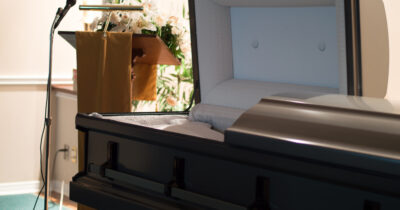
A 28-year-old woman believes her mental anguish is so severe that her only solution is death.
Zoraya ter Beek – who lives in the Netherlands that’s legalized voluntary euthanasia – is physically healthy but says she’s burdened by depression, autism and borderline personality disorder. In May, she plans to take a “nice nap,” and never wake.
Typically considered an option for the terminally ill, critics argue that laws “destigmatize suicide,” making euthanasia a “default option” for people with psychiatric disorders. Keep reading to learn more about this woman and voluntary death.
Zoraya ter Beek lives in a little Dutch town near the German border, in a nice home with a 40-year-old boyfriend whom she loves dearly, and their two cats.
Admitting she lacked the will to follow through with her dreams of being a psychiatrist, Ter Beek explains she’s spent a lifetime burdened by her depression, autism and borderline personality disorder.

And now, she wants to be euthanized and “freed from life.”
Legal termination of life
According to Regional Euthanasia Review Committee, the body that determines lawful termination of death in the Netherlands, euthanasia is when the physician administers fatal substances to the patient and assisted suicide, is when the patient is given the substances to ingest independently.
“Euthanasia is defined as the actions of a physician who terminates a patient’s life at the patient’s explicit request. Key requirements are that the request is voluntary and well-considered, and that the patient’s suffering is unbearable and without prospect of improvement.”
‘I can’t do this anymore’
Ter Beek, who lives in the small town of Oldenzaal, claims her psychiatrist advised her: “there’s nothing more we can do for you. It’s never gonna get any better.”
Suggesting there’s no “prospect of improvement”, the woman told The Free Press in that she scheduled a date with death in early May.

“I was always very clear that if it doesn’t get better. I can’t do this anymore,” she said in her interview, which ran April 1, 2024.
The procedure, she explains, will happen on the couch at home, with her boyfriend nearby and “no music” playing in the background.
She added: “The doctor really takes her time. It is not that they walk in and say, ‘lay down please!’ Most of the time it is first a cup of coffee to settle the nerves and create a soft atmosphere.” Ter Beek continues, “Then she asks if I am ready. I will take my place on the couch. She will once again ask if I am sure, and she will start up the procedure and wish me a good journey. Or, in my case, a nice nap, because I hate it if people say, ‘Safe journey.’ I’m not going anywhere.”
Next, the doctor gives her a sedative, followed by a drug that will stop her heart.
Once ter Beek is declared dead, a review committee evaluates her death, ensuring protocol was followed for a lawful ending of life.
Not wanting a grave that her boyfriend will have to maintain, ter Beek adds, “I did not want to burden my partner with having to keep the grave tidy. We have not picked an urn yet, but that will be my new house!”
After, she says her unnamed boyfriend will scatter her ashes in “a nice spot in the woods” that the two chose earlier.
Death now a ‘default option’
Ter Beek is one of many people across the world who’s deciding to end a treatable pain with death.

Stef Groenewoud, a healthcare ethicist in the Netherlands, says professionals seem to give up easily on their patients now. “I’m seeing euthanasia as some sort of acceptable option brought to the table by physicians, by psychiatrists, when previously it was the ultimate last resort.”
She continues, “I see the phenomenon especially in people with psychiatric diseases, and especially young people with psychiatric disorders, where the healthcare professional seems to give up on them more easily than before.”
Meanwhile Theo Boer, a healthcare ethics professor who served for a decade on a euthanasia review board in the Netherlands, says, “I entered the review committee in 2005, and I was there until 2014,” Boer said, explaining he resigned. “In those years, I saw the Dutch euthanasia practice evolve from death being a last resort to death being a default option.”
Boer suggests that people are being encouraged to “kill themselves by laws that destigmatize suicide, a social media culture that glamorizes it, and radical right-to-die activists who insist we should be free to kill ourselves.”
‘It’s not normal’
Meanwhile, the online community is expressing shock over ter Beek’s decision to give up her gift of life. One woman writes, “Please get help. It’s not normal for any human to want death.I too felt this way…Friends who you can talk to are also very helpful.”
A second shares, “The psychiatrist who told her “there’s nothing more we can do for you. It’s never going to get any better.” Should be criminally charged, or at least have their license to practice counseling revoked. What a monstrous thing to do.”
Others shared their stories of struggling with depression: “That could have been me. I’m thankful 25 years later I did not have that option. People didn’t give up on me and I was given the proper help.”
As for ter Beek, she admits she has a bit of fear: “I’m a little afraid of dying, because it’s the ultimate unknown,” she said. “We don’t really know what’s next – or is there nothing? That’s the scary part.”
As of December 2023, termination of life is currently allowed – with specific local regulations – in Canada, the Netherlands, Switzerland, 11 states in the U.S., Germany, Australia, Belgium, France and Japan.
What are your thoughts on euthanasia or medically assisted death? Do you think the laws are too loose and should be more specific to allow death with dignity for only terminally ill patients? Or should we all have the right to end our lives if we choose?
Share your thoughts with us and then share this story so we can hear what others have to say on this very controversial topic!
READ MORE
- Husband dies by suicide weeks after grieving the loss of his stillborn twins – rest in peace
- Mom kills her three children and herself in horrifying murder-suicide – now father is speaking out




